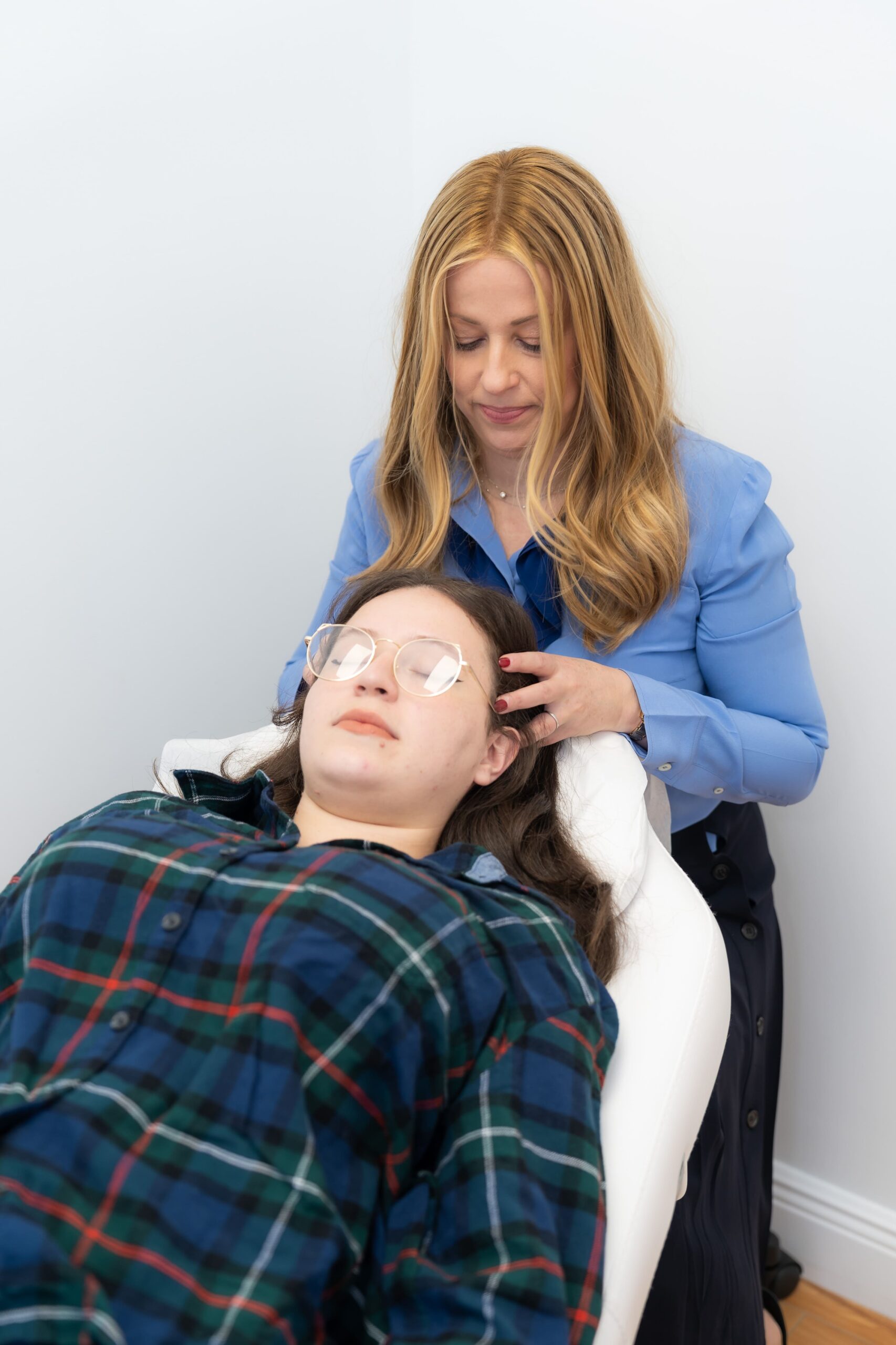It is a true holistic approach integrating the body's systems. Cranial Osteopathy was developed by Dr. William Sutherland in the mid 1900's based on the Osteopathic principles of Dr. AT Still, the founder of Osteopathic Medicine. It is typically practiced exclusively by Doctors of Osteopathic Medicine. Craniosacral therapy is an osteopathic technique similar to Cranial Osteopathy, developed by Dr. John Uplededger in the 1970’s based on the principles of Cranial Osteopathy. It is practiced by a variety of practitioners who are typically not physicians.
Cranial osteopathy is an osteopathic manipulative therapeutic approach based on the rhythmic motion of the cranial bones (the skull bones) and the sacrum (a triangular bone in the lower back). This rhythm is thought to be directed by the cerebrospinal fluid, a fluid that surrounds and protects the brain and spinal cord. This movement, often known as the Iprimary respiratory mechanism (PMR) is thought to have a deep connection with the body's physiological systems. According to Dr. Sutherland, any disruptions or limitations in this Primary Respiratory Mechanism could potentially result in health concerns and normalizing this rhythm can promote the body's natural healing processes. Cranial osteopathy goes beyond addressing the physical structures of the head. It involves comprehending the connections between systems within the body and recognizing how an imbalance in one area can affect another. Patients often report experiencing relaxation, warmth, pulsation, and even emotional release during these sessions.
Cranial osteopathy can be used at any age in adults and children. It can even be used gently to indirectly support the infants during discomfort and colic. The hands-on approach has a soothing effect on infants potentially reducing discomfort and episodes of crying. It can help address imbalances or tensions that may have occurred during birth which can contribute to discomfort.
